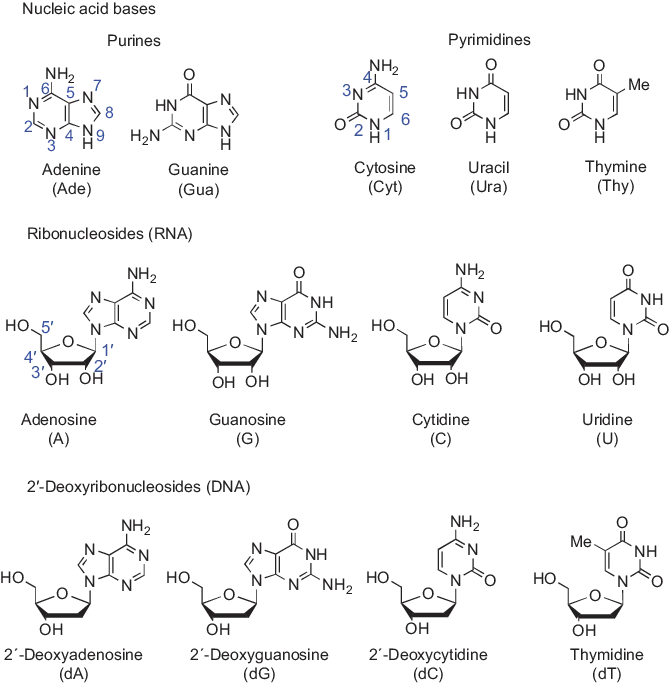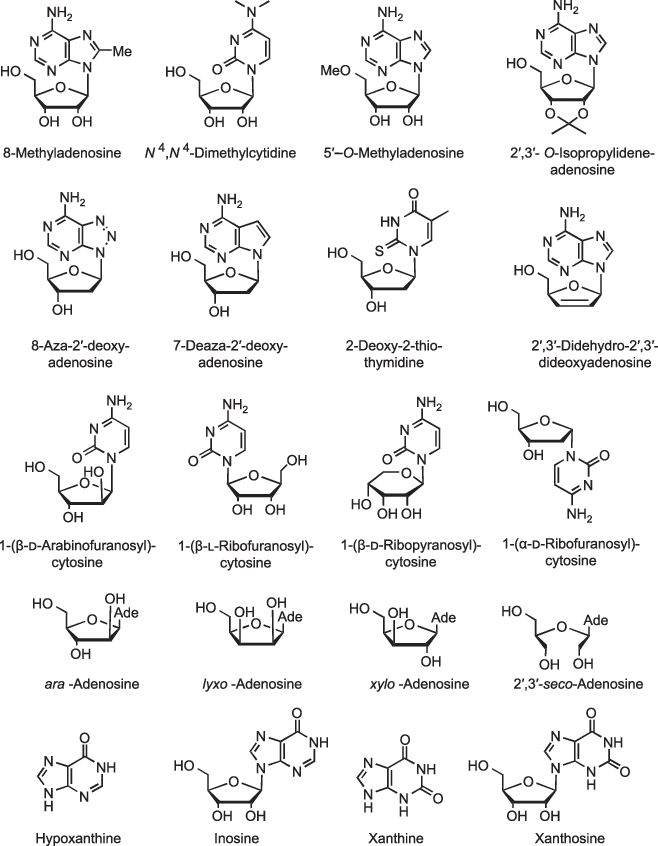
eBook - ePub
Chemistry of Nucleic Acids
Harri Lönnberg
This is a test
Condividi libro
- 364 pagine
- English
- ePUB (disponibile sull'app)
- Disponibile su iOS e Android
eBook - ePub
Chemistry of Nucleic Acids
Harri Lönnberg
Dettagli del libro
Anteprima del libro
Indice dei contenuti
Citazioni
Informazioni sul libro
Life in all its forms is based on nucleic acids which store and transfer genetic information. The book addresses the main aspects of synthesis, hydrolytic stability, solution equilibria of nucleosides and nucleotides as well as base modifications of nucleic acids. The author further describes their structural analogues used as therapeutic drugs, such as antivirals and anticancer agents, and prodrug strategies of nucleotides.
Domande frequenti
Come faccio ad annullare l'abbonamento?
È semplicissimo: basta accedere alla sezione Account nelle Impostazioni e cliccare su "Annulla abbonamento". Dopo la cancellazione, l'abbonamento rimarrà attivo per il periodo rimanente già pagato. Per maggiori informazioni, clicca qui
È possibile scaricare libri? Se sì, come?
Al momento è possibile scaricare tramite l'app tutti i nostri libri ePub mobile-friendly. Anche la maggior parte dei nostri PDF è scaricabile e stiamo lavorando per rendere disponibile quanto prima il download di tutti gli altri file. Per maggiori informazioni, clicca qui
Che differenza c'è tra i piani?
Entrambi i piani ti danno accesso illimitato alla libreria e a tutte le funzionalità di Perlego. Le uniche differenze sono il prezzo e il periodo di abbonamento: con il piano annuale risparmierai circa il 30% rispetto a 12 rate con quello mensile.
Cos'è Perlego?
Perlego è un servizio di abbonamento a testi accademici, che ti permette di accedere a un'intera libreria online a un prezzo inferiore rispetto a quello che pagheresti per acquistare un singolo libro al mese. Con oltre 1 milione di testi suddivisi in più di 1.000 categorie, troverai sicuramente ciò che fa per te! Per maggiori informazioni, clicca qui.
Perlego supporta la sintesi vocale?
Cerca l'icona Sintesi vocale nel prossimo libro che leggerai per verificare se è possibile riprodurre l'audio. Questo strumento permette di leggere il testo a voce alta, evidenziandolo man mano che la lettura procede. Puoi aumentare o diminuire la velocità della sintesi vocale, oppure sospendere la riproduzione. Per maggiori informazioni, clicca qui.
Chemistry of Nucleic Acids è disponibile online in formato PDF/ePub?
Sì, puoi accedere a Chemistry of Nucleic Acids di Harri Lönnberg in formato PDF e/o ePub, così come ad altri libri molto apprezzati nelle sezioni relative a Biowissenschaften e Biochemie. Scopri oltre 1 milione di libri disponibili nel nostro catalogo.
Informazioni
1 Nucleosides: structure, nomenclature and solution equilibria
1.1 Nomenclature
Nucleosides, the monomeric constituents of nucleic acids, are N-glycosylated derivatives of two different categories of heteroaromatic nitrogen bases, namely monocyclic pyrimidines and bicyclic purines. The pyrimidine bases are cytosine, uracil and thymine, and the purine bases are adenine and guanine. Uracil occurs only in RNA and thymine in DNA, while the other bases are common for both types of nucleic acids. The structures and enumeration of these canonical nucleic acid bases and nucleosides are depicted in Figure 1.1. As indicated, the glycosyl group is attached to N1 of pyrimidine bases and N9 of purine bases. The enumeration of the glycosyl moiety starts from the anomeric carbon, that is, the carbon atom bound to the nucleobase, not from the ring oxygen. In ribonucleosides (constituents of RNA), the glycosyl moiety is β-d-ribofuranosyl group and in 2′-deoxyribonucleosides (constituents of DNA) 2-deoxy-β-d-erythro-pentofuranosyl group. The latter group is often called 2-deoxy-β-d-ribofuranosyl group, but this name is not consistent with the nomenclature of carbohydrates [1]. The prefix “ribo” refers to a sugar having three stereogenic centers in addition to the anomeric (C1′) carbon. 2-Deoxypentoses contain only two nonanomeric stereogenic centers; hence, the correct prefixes are “erythro” and “threo.” The names of ribonucleosides are derived from the names of their base moieties: adenosine, guanosine, cytidine and uridine. The names of 2′-deoxyribonucleosides have, in turn, been formed from the names of the respective ribonucleosides by a prefix 2′-deoxy, with the exception of thymine derivative. This 2′-deoxyribonucleoside is for historical reasons called just thymidine.

Figure 1.1: The structure and enumeration of nucleic acid bases, ribonucleosides and 2′-deoxyribonucleosides.
The names of substituted or modified nucleosides are derived from the names of the parent nucleosides, as exemplified by a few illustrative examples in Figure 1.2. Substituents on the sugar and base moiety of nucleosides are indicated in the beginning of the name in alphabetical order. A missing ring nitrogen is indicated by a prefix “deaza” and an extra ring nitrogen by a prefix “aza.” One should, however, note that this kind of nomenclature is applicable only as long as the sugar moiety is a five-membered d-sugar having a ribo (for ribonucleosides) or erythro configuration (for 2′-deoxyribonucleosides) and the anomeric configuration is β. If the configuration of the sugar moiety, enantiomeric form or ring size, is changed, the name of the nucleoside is formed by adding the name of the sugar moiety as a substituent to the name of the base moiety. This is also the case when the base moiety is heavily modified. The compound is then named as a glycosylated heterocyclic compound. Sometimes abbreviations such as ara-, lyxo- or xylo-adenosine are used. This means that the sugar moiety still is a β-d-glycofuranosyl group, but the configuration is not any more ribo. In case the sugar ring has been opened by cleaving a C–C bond, the site of the missing bond is indicated by a prefix “seco,” for example, 2′,3′-seco-adenosine. In addition, some noncanonical nucleobases and nucleosides have trivial names that are commonly used. The N2-deamino analogs of guanine and guanosine are called hypoxanthine and inosine, respectively, and the 2-oxo derivatives of these are known as xanthine and xanthosine.

Figure 1.2: Examples of the names of substituted or modified nucleosides.
1.2 Cyclonucleosides
Cyclonucleosides are synthetic analogs of nucleosides having an additional covalent linkage between the sugar and base moiety. Only one cyclonucleoside, 3,5′-anhydro-xanthosine, has bee...